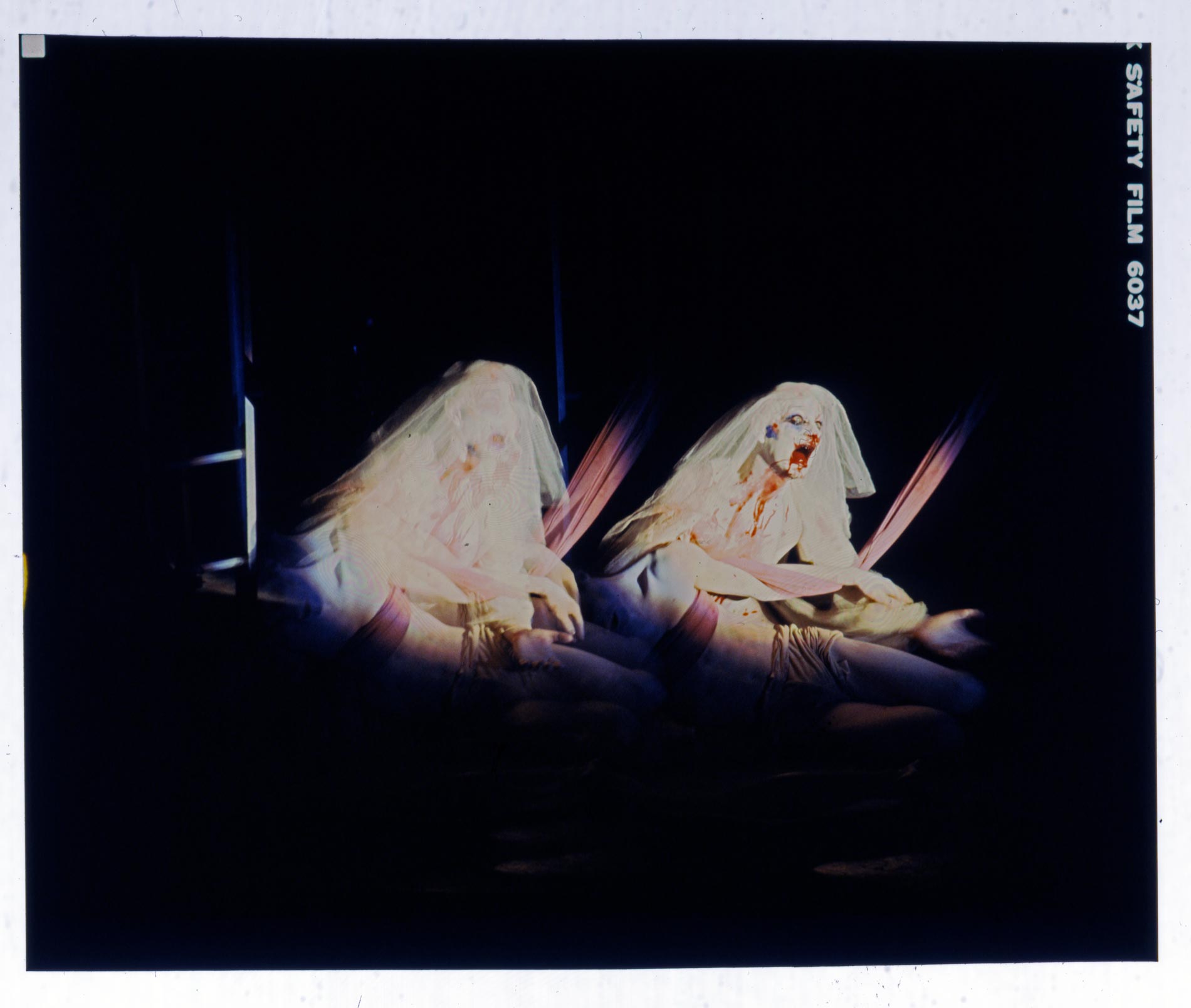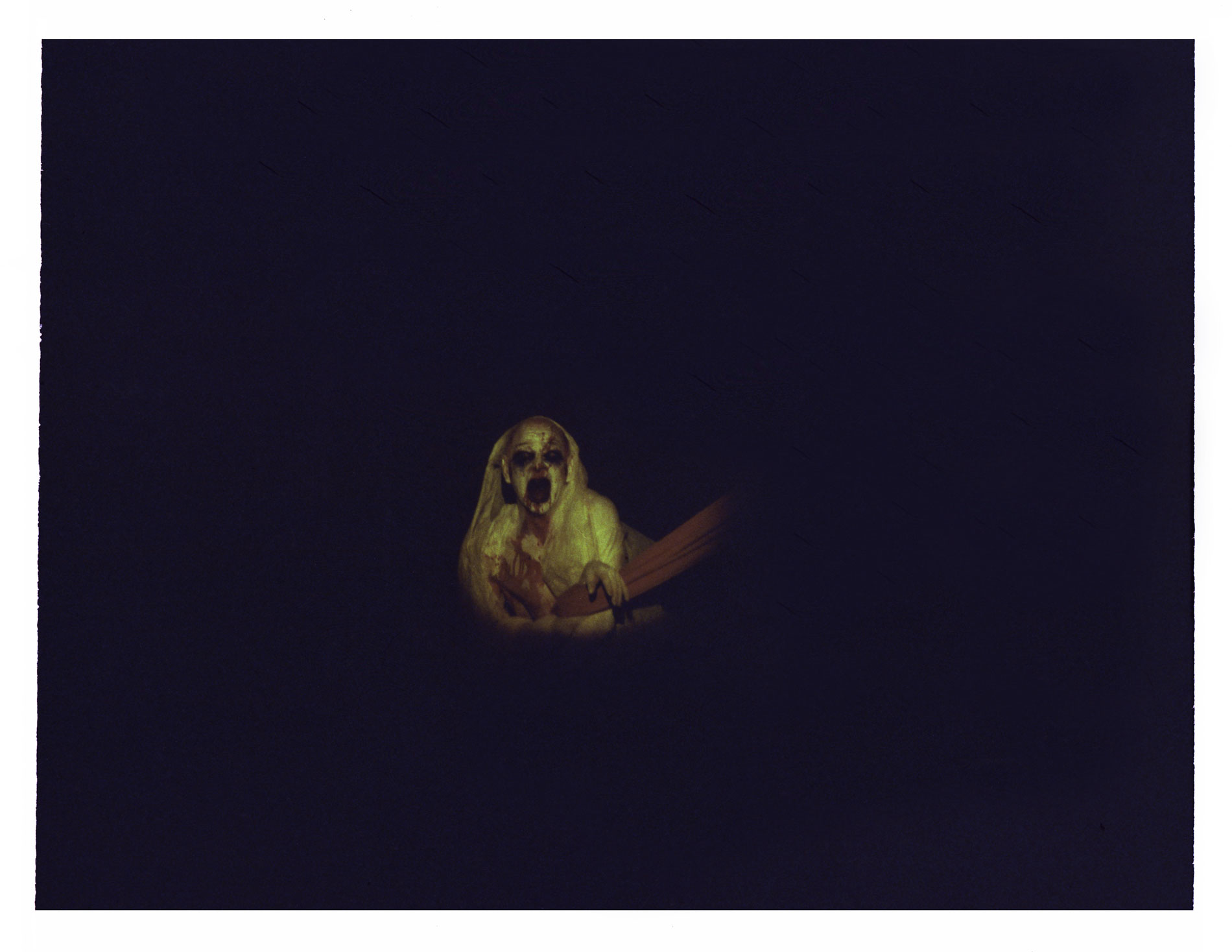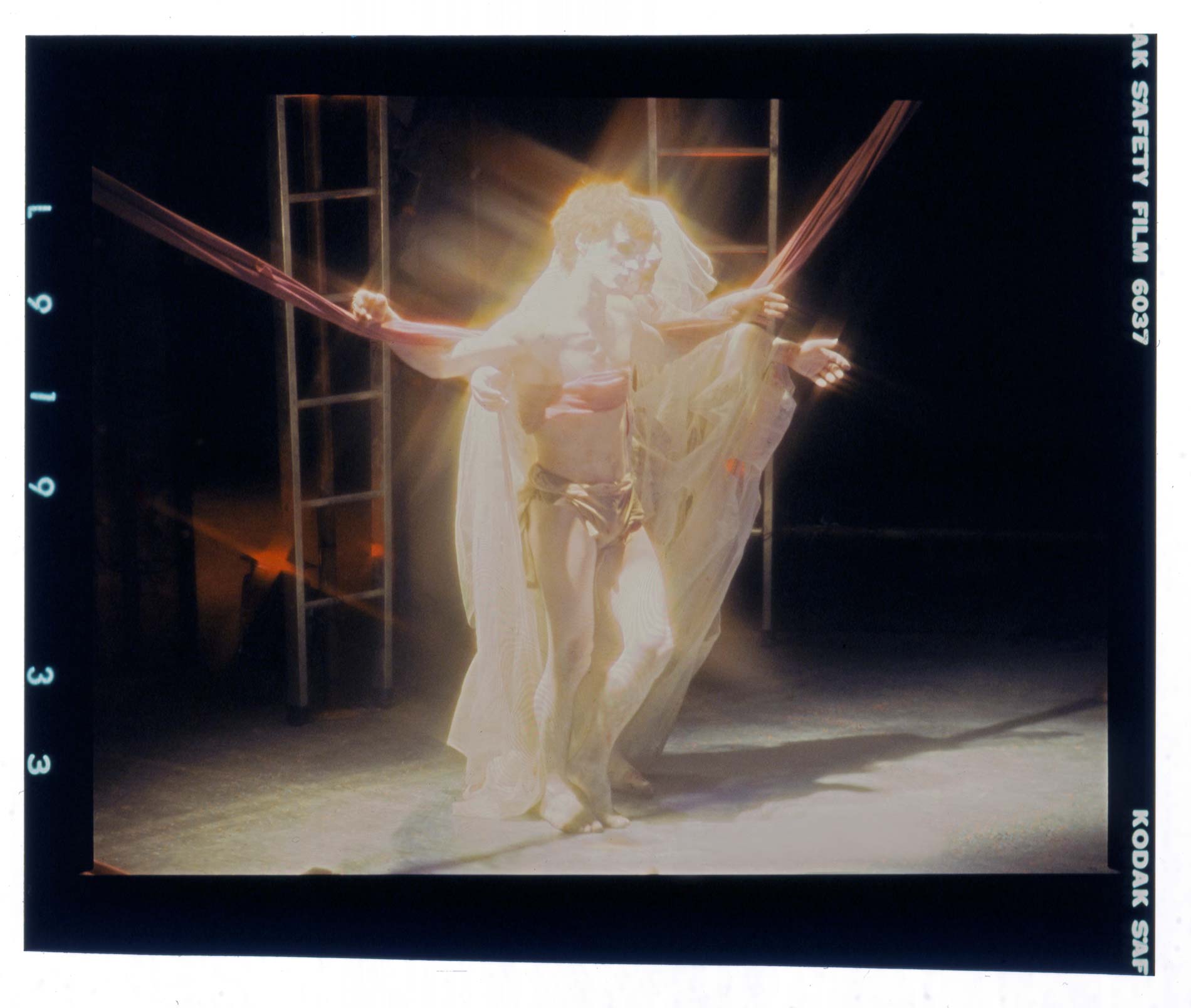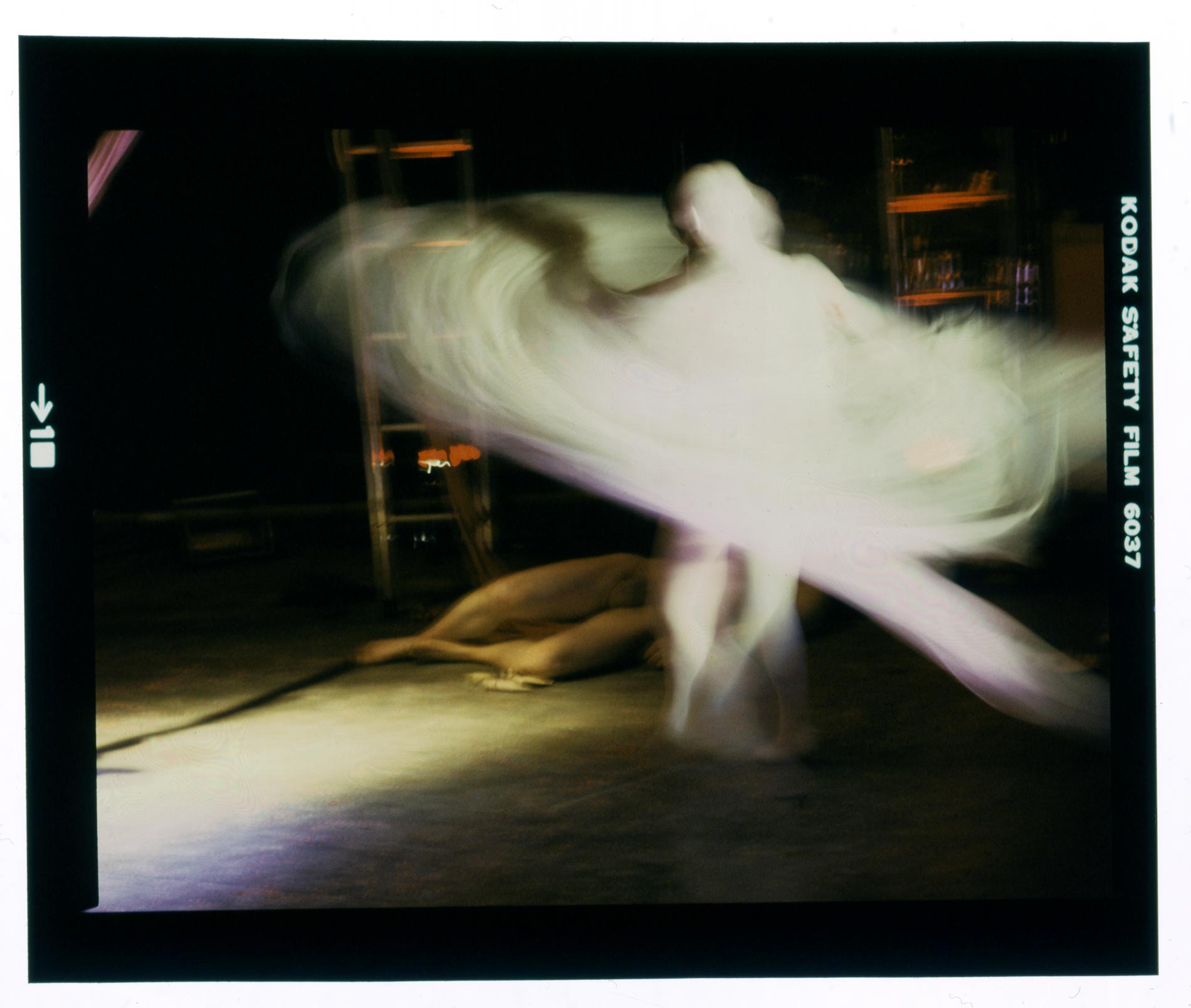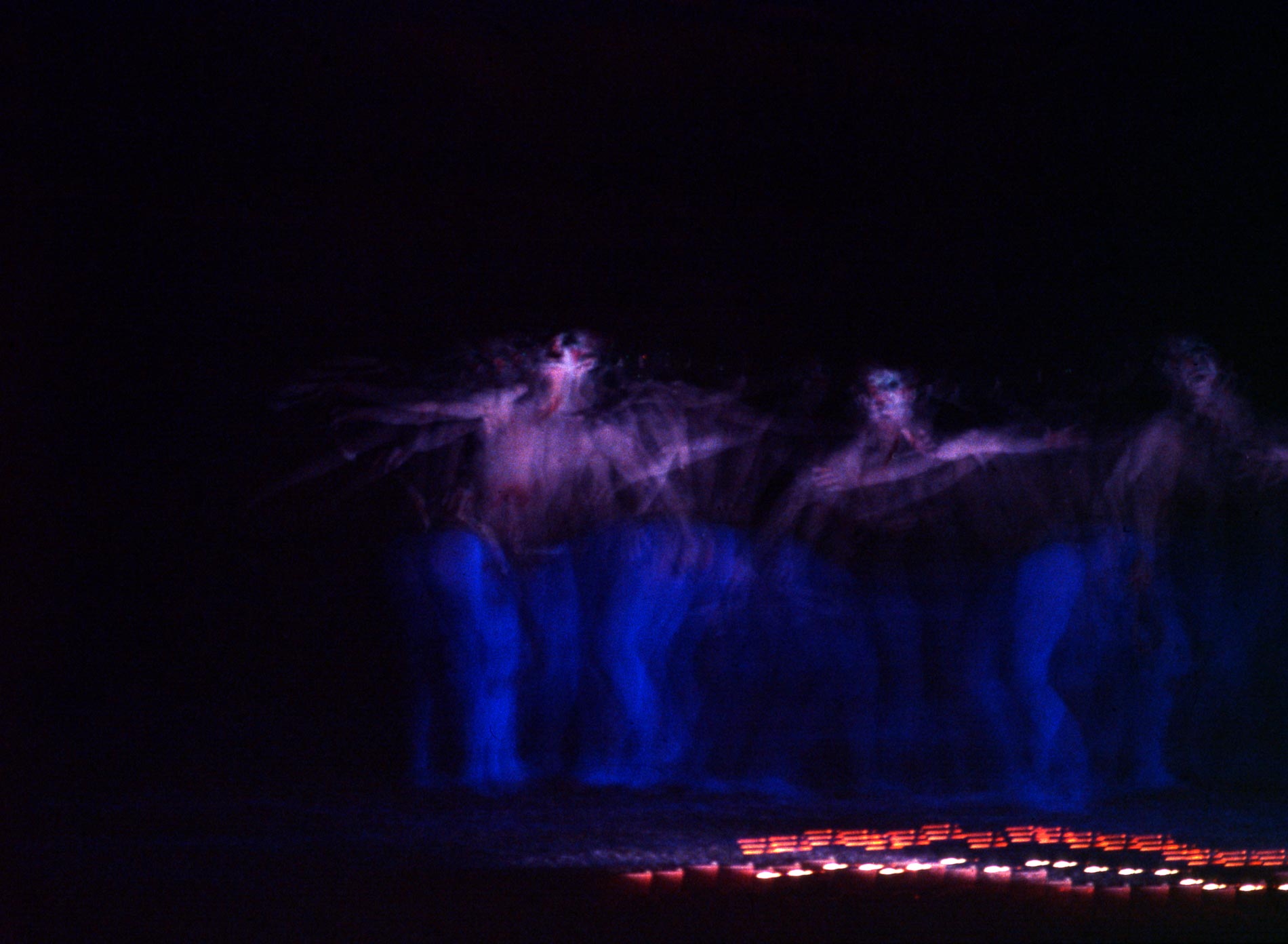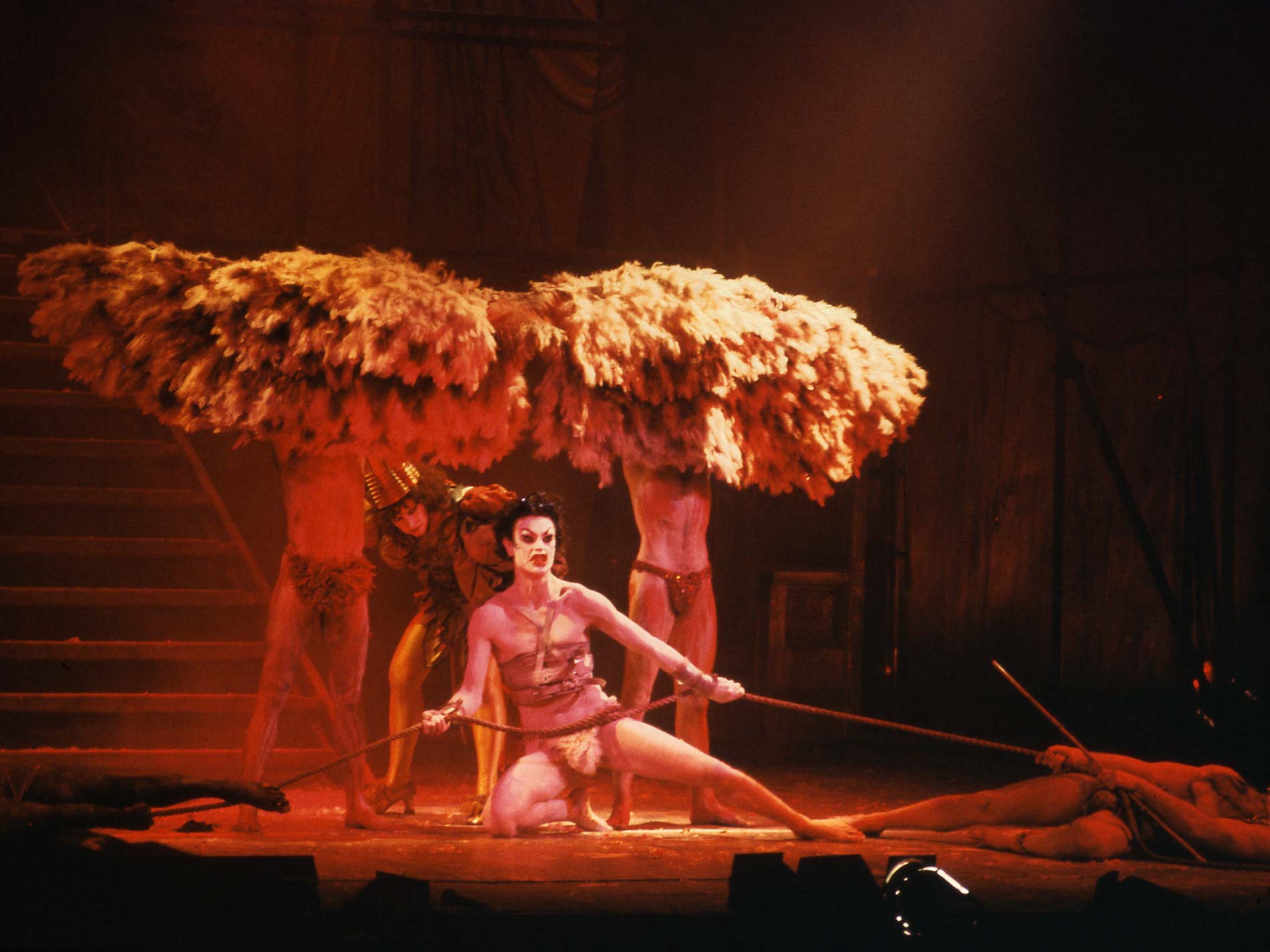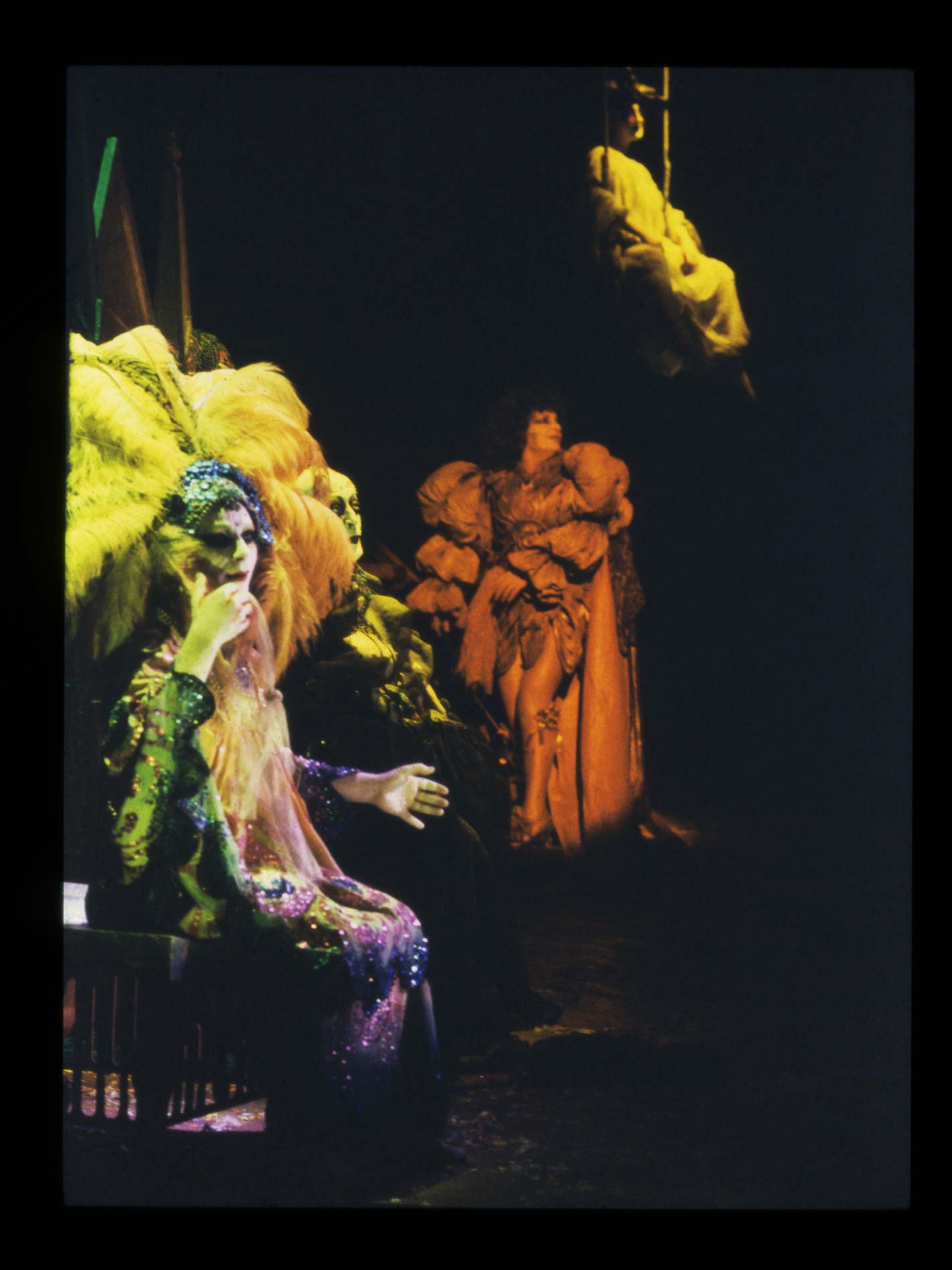TRIBUTE to LINDSAY KEMP : “I’m a Dancer” –
TRIBUTO A LINDSAY KEMP
“ I’m a dancer ! “
Foto di Graziano Villa ©
Lindsay Kemp . Cheshire (UK) 3 maggio 1938 – Livorno, 24 agosto 2018
E’ stato un mimo, coreografo, attore, ballerino, regista e pittore britannico.
Seguace della cultura underground, Kemp era considerato un gigante del teatro di danza contemporaneo. Nella sua lunga carriera la sua arte ha attratto vere e proprie leggende artistiche come Nureyev, Fellini e Mick Jagger. Soprattutto ha esercitato un’influenza determinante sulla storia del rock. Basti pensare che tra i suoi allievi si possono annoverare David Bowie, Kate Bush e Peter Gabriel. Tra i maestri Lindsay aveva avuto Marcel Marceau, il grande mimo francese. E di Marcel ricordava sempre: «Mi ha donato le mani con le quali ho imparato a parlare». E quelle mani Kemp le aveva trasformate in poesia con la sua danza onirica. Kemp non hai smesso anche negli ultimi anni di vita la sua attività parallela di pittore, allestendo mostre dei suoi dipinti e dei suoi disegni in tutto il mondo.
Il progetto consiste di 2 sezioni :
- la prima sezione è composta da una serie di stampe fotografiche realizzate dall’artista Graziano Villa che ha documentato 2 delle rappresentazioni più importanti di Kemp : “Flowers” di Jean Genet e ‘Salomé’di Oscar Wilde
- La seconda sezione è composta da una serie di 13 Stampe a Colori realizzate con il processo CIBACHROME, che utilizzava la stampa su carta da diapositiva a colori un tipo di lavorazione che è terminata all’inizio degli anni 2000.
-
Pertanto le copie esistenti sono dei pezzi unici, firmate dall’artista.
Graziano Villa vuole rendere un tributo ad uno dei più Grandi Artisti, Lindsay Kemp che, con la sua ricerca e le sue sperimentazioni, riuscì a costruire un suo stile personale, un mélange meraviglioso di diversi tipi di spettacolo: il teatro classico, il circo, il teatro Kabuki, il teatro del Noh, il cabaret e la danza moderna. Il risultato è una “magica coreografia teatrale”. Gli attori sembrano muoversi in un universo parallelo alla nostra realtà, in cui gli spettatori sono invitati ad entrare per vivere insieme a loro un’esperienza metafisica. In questa serie di diapositive, lo vediamo trasformare se stesso e i suoi attori in diversi personaggi dai colori vividi, direi quasi “circensi”, che sono una componente fondamentale del suo stile teatrale. Vogliamo delineare la complessa fisionomia artistica di Lindsay Kemp, maestro e mentore del teatro/danza e del mimo, autore e interprete ineguagliabile dei suoi spettacoli, che sconfina con naturalezza attraversando tutti i territori della creatività fino a quello dell’arte visiva.
Fellini e Kemp
A Rimini nel ‘98 il Maestro Lindsay Kemp portò in scena il suo spettacolo antologico Dreamdances. Ebbi la fortuna di incontrarlo.Mi disse che era stato amico di Federico e Giulietta fin dal 1966, che aveva rifiutato l’offerta di Federico che l’avrebbe voluto nel suo Casanova, per una tournée in Australia dove decise di rimanere per un anno. Proprio a Federico aveva dedicato, traendone ispirazione, la “Ballata di Rosa e Nino”, dalle surreali atmosfere circensi, che era uno dei brani del suo Dreamdances. Si ricordava di quando Giulietta era andata in camerino da lui in lacrime dopo aver assistito allo spettacolo ‘Nijinsky il matto’, per quanto le era piaciuto lo spettacolo. E lui contraccambiò dicendole quali erano i suoi due film preferiti di Federico: “La Strada” e “Le notti di Cabiria”.
Francesca Fabbri Fellini
TRIBUTE TO LINDSAY KEMP
“I’m a dancer! “
Photos by Graziano Villa and works by L. Kemp
Lindsay Kemp. Cheshire (UK) May 3, 1938 – Livorno, August 24 2018
He was a British mime, choreographer, actor, dancer, director and painter.
Follower of underground culture, Kemp was considered a giant of contemporary dance theater. During his long career his art has attracted real artistic legends such as Nureyev, Fellini and Mick Jagger. Above all he has exercised a decisive influence on the history of rock. Just think that among his students there were David Bowie, Kate Bush and Peter Gabriel. Among the masters Lindsay had had Marcel Marceau, the great french mime. And he always remembered Marcel: “He gave me the hands with which I learned to speak”. And Kemp had transformed those hands into poetry with his dreamlike dance. Kemp did not stop his parallel activity as a painter even in the last years of his life, setting up exhibitions of his paintings and drawings all over the world.
The project consists of 2 sections:
-
The first section is composed of a series of photographic prints created by the artist Graziano Villa who documented 2 of Kemp’s most important performances: “Flowers” by Jean Genet and “Salomé” by Oscar Wilde
The works were created in color slide with the “open shutter photography” technique – 1979/1980
-
The second will be an exhibition of his paintings depicting characters portrayed on paper with a quick, abbreviated, secure sign and are mostly sailors, prostitutes, clowns, bullfighters, dancers. Personal heroes, archetypes created in a few moments with few chromatic hints and united by that thrill of precariousness that makes them similar to the artist.
Fellini and Kemp
In Rimini in ’98 the Master Lindsay Kemp staged his anthological show Dreamdances.
I was lucky to meet him. He told me that he had been friends with Federico and Giulietta since 1966, that he had refused, Federico‘s offer that he would have wanted in his Casanova, for a tour in Australia of 2 months, which turned in a period of one year.
Precisely to Federico he had drawn, drawing inspiration from it, the Ballad of Rosa and Nino, with surreal circus atmospheres, which was one of the pieces of his Dreamdances.
He remembered when Giulietta had gone to his dressing room in tears after attending the show ‘Nijinsky the madman’, as much as she liked the show.
And he replied by telling her which were his two favorite Fellini’s films: “La Strada” and “The nights of Cabiria”.
Francesca Fabbri Fellini
Tributo a Lindsay Kemp di Maurizio Porro*
“Il Mimo dell’ Inconscio”
Sembrano venire da un altro mondo, che forse nel tempo si è molto allontanato da noi, le allarmanti, bellissime e suggestive foto in cui Graziano Villa ha fermato l’attimo fuggente della poesia scenica di Lindsay Kemp, eroe unico del suo irripetibile mondo.
Sono momenti velati del suo spazio scenico ma sembrano in movimento, appartengono al passato e anche al presente, sebbene pochi si ricordino, a un anno e mezzo dalla morte avvenuta a Livorno il 24 agosto 2018, delle stravaganze ondivaghe di Kemp che ebbero uno straordinario successo nei teatri italiani: posso testimoniare l’entusiasmo contagioso e un poco sabbatico di invasate platee al teatro Manzoni in epoca in cui personaggi come lui, fuori dai canoni, non erano di moda.
Ispirato a Jean Genet di “Notre-Dame des-Fleurs” per “Flowers”, il mimo attore ballerino aveva creato un suo mondo, una sua confessione e una sua poetica, evocando uno spazio quasi paranormale, una magia teatrale che partendo dal circo si liberava in terreni sconosciuti, padrone di un’arte visiva che sembrava poter fare a meno della parola che precedeva col gesto e lo sguardo.
Nato a Cheshire, vicino Liverpool nel ’38, il 3 di maggio, Kemp ebbe il secondo tempo della sua vita e carriera segnato dal viaggio in Italia che si trasformò poi in residenza, finendo con stage per giovani e adoranti attori.
Raffinato, barocco, estetizzante e naturalmente decadente perché si calava nel degrado del mondo, privato e non solo, Kemp fu un pezzo unico irripetibile della scena e della sua continua metamorfosi riuscendo ad essere elegantissimo e spregevole, antico e futuro, favolistico e tragico, calandosi in personaggi maledetti come Nijinsky, facendo anche un omaggio al cinema muto e vivendo con la sua arte molti sogni di notti di mezza estate.
Ken Russell lo ha utilizzato al cinema ma è quasi inutile dire che Fellini sarebbe impazzito per un personaggio così, che sarebbe stato bene nei suoi “Clowns” e l’avrebbe inseguito come un’ombra di un mondo fantastico di cui Kemp era artefice e vittima, regista e depositario di una intima e dolorosa verità che egli lasciava scorrere in platea attraverso sconosciuti rivoli di poesia teatrale, di emozionante suggestione visiva, sbirciando nel suo inconscio a nudo.
* editorialista del "CORRIERE della SERA"
Tribute to Lindsay Kemp by Maurizio Porro*
“The Mime of the Unconscious”
The alarming, beautiful and suggestive photos in which Graziano Villa stopped the fleeting moment of the scenic poetry of Lindsay Kemp, the only hero of his unrepeatable world, seem to come from another world, which perhaps has moved far away from us over time.
They are veiled moments of its scenic space but seem to be moving, they belong to the past and also to the present, although few remember, a year and a half after the death in Livorno on August 24, 2018, of the wavy extravagances of Kemp that had an extraordinary success in Italian theaters: I can testify to the contagious and a little sabbatical enthusiasm of invaded audiences at the Manzoni theater in an era when characters like him, out of the norm, were not in fashion. Inspired by Jean Genet of “Notre-Dame des-Fleurs” for “Flowers”, the mime actor dancer had created his own world, his confession and his poetics, evoking an almost paranormal space, a theatrical magic that starting from the circus was released in unknown lands, master of a visual art that seemed to be able to do without the word that preceded it with gesture and gaze.
Born in Cheshire close to Liverpool in ’38, on May 3, Kemp had the second half of his life and career marked by the trip to Italy which then turned into a residence, ending with internships for young and adoring actors. Refined, baroque, aesthetic and naturally decadent because it fell into the degradation of the world, private and not only, Kemp was a unique unrepeatable piece of the scene and its continuous metamorphosis managing to be elegant and despicable, ancient and future, fabulous and tragic, descending in cursed characters like Nijinsky, also paying homage to silent cinema and living with his art many dreams of midsummer nights.
Ken Russell used it in the cinema but it is almost needless to say that Fellini would have gone mad for such a character, that he would have been good in his “Clowns” and would have chased him like a shadow of a fantasy world of which Kemp was the author and victim , director and custodian of an intimate and painful truth that he let flow through the audience through unknown streams of theatrical poetry, of exciting visual suggestion, peering into his unconscious naked.
* columnist of "CORRIERE della SERA"

